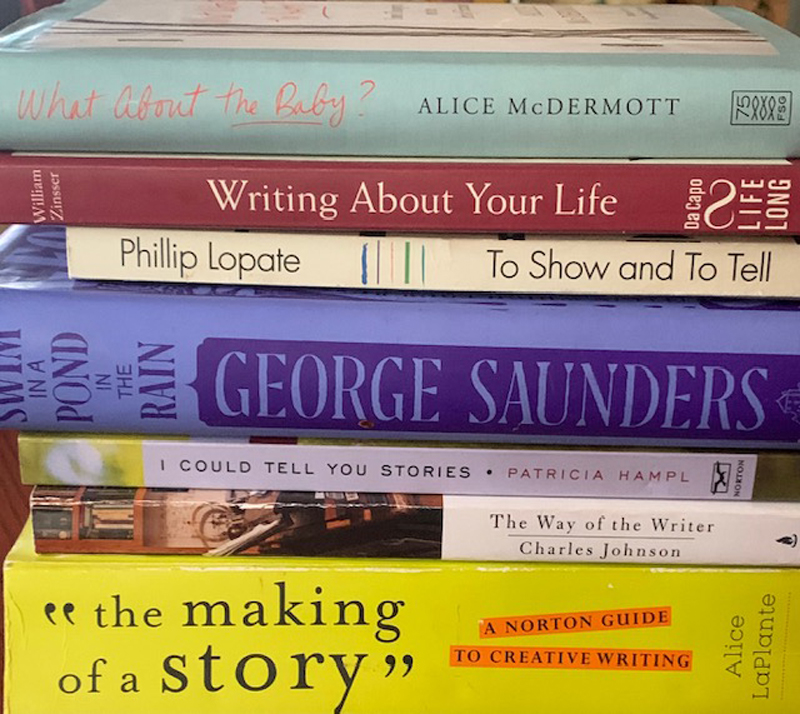Last Updated on April 10, 2023

Have you ever seen the words “Show, Don't Tell” pop up in a comment from your editor? Or maybe when you were a student, this advice was scrawled in the margins of your essays.
If you've received this feedback, you're not alone. Every writer hears it at some point in his or her career. But what exactly does it mean? Just do a Google search on “show, don't tell,” and you'll conclude that everybody and his uncle is looking up the concept. (When I did this search, over seven billion results poured in.)
How Do You Show a Scene?
Part of the problem writers can have putting the advice into action is the somewhat misleading verb show, which could be taken to mean “paint a picture.” But painting a picture only partially satisfies the requirement. A writer may have thought she'd done a terrific job of showing, having told the reader exactly what everything looked like — for example, the mismatched furniture that smacked of student life, the character's cutoffs so short her pockets hung below the ragged denim edges, the late afternoon sun washing the walls golden. But she may then have gone on to tell us that her protagonist “was upset” or “was disappointed” or “thought everyone was judging her.” So she showed us what the scene looked like, but then went on to tell us what her character was feeling rather than “showing” us.
Painting a picture is a good thing. But it can't stop there. A skilled writer not only makes us see what's going on but also makes us feel and hear and sense the scene, including what's going on inside the character. A gifted novelist or memoir writer doesn't tell us her character is sad; she makes us cry too.
Give Your Reader an Experience
Rather than “Show, don't tell,” the technique might more accurately be called: “Make the reader experience it.”
Your goal should be to pull your reader so deeply inside your story that he or she goes through it all right alongside your protagonist. But how do you do this; how do you make us feel your protagonist's disappointment (or anger or joy)? How do you conjure these feelings inside your reader?
One important way to help us experience what your characters are going through is to use just the right sensory details.
Consider this brief passage by Barbara Kingsolver in Prodigal Summer; here she's describing her character, Deanna's, experience of having an attractive man show up out of the blue on her mountain, and then disappear just as suddenly:
Then he was gone. Birdsong clattered in the space between trees, hollow air that seemed vast and suddenly empty. He had ducked headfirst into the rhododendrons, leaving behind no reason to think he had ever been there at all.
A hot blush was what he left her, burning on the skin of her neck.
In the context, we can understand that the air feels suddenly hollow because something is absent and the hot blush on her neck signifies that this man has caught her by surprise and stirred something in her. This is sensory detail conveying emotion, something Kingsolver does beautifully.
Sensory Detail Is a Writer's Secret Weapon
Sensory details reside in all the small pulses of sensory input that fill our every waking moment. Try this exercise: Once you've read this and the next couple of paragraphs, close your eyes and notice every single thing there is to notice — the temperature of the air on your skin, the feel of the chair or couch under your body, any aromas in the air, the taste of the peach you may have just eaten, the sound of the air conditioner or traffic whizzing by outside. And then go deeper still; what are you sensing in your gut — your emotional gut; what are you feeling in your heart? Are you feeling slightly unsettled? What are the actual sensations that let you know you're unsettled? Are you happy? What is the anatomy of happy?
As you explore your inner sensory world, it's important to know that sensory experience doesn't stop with the traditional five. According to some sources, we have from 12 to 20 different senses, depending on how you break it down. These additional senses include, among others, proprioception (our sense of where our body is in space), balance (the vestibular system), acceleration, temperature, and the ability to feel the insides of our bodies, including our organs. This last one can be handy in conveying the emotional state of your protagonist because we register our emotions physically, often in the gut, chest, or throat (e.g., a tightness in our throat, a pounding in our chest, or our stomach feeling queasy).
Once you've fully explored your inner landscape, then open your eyes and notice everything there is to see.
This kind of travel into sensory awareness is your ticket to creating a deeper experience for your reader. When you arrive at a spot in your story that is — or needs to be — a heightened moment for your character, take the road into sensory awareness to discover how to convey the experience, rather than telling us about it. A heightened moment might be as momentous as childbirth or as simple as a father telling his son he loves him. It could be the dramatic moment of a character being beaten up in an alley or a quiet conversation that changes the course of your character's life. In plot moments like these, you can use sensory detail to slow your narrative down, alerting your reader that something important is happening.
That character who was “disappointed” or “upset” might instead have this experience: Face wet with tears, she sank so deeply into the couch that she became one with the rough and nubby upholstery, half-wishing to disappear entirely into it.
Take a Walk in Your Character's Shoes
To capture this type of experience, first you will step inside your character's skin; then you'll walk around in your character's shoes... as he or she endures or enjoys a particular scenario. From within your character's POV, go into your sensory awareness and see what your character experiences. What does he feel in his gut; what happens to his inner world? What does he notice within and around him? That is where the magic happens.
A huge bonus to doing this type of practice as a writer is that the sensory world is fertile ground for well-wrought metaphor. And metaphor is another inroad to giving your reader an experience, to “showing, not telling.” Metaphor can serve as a sensory transmission of a concept or feeling to your reader.
Again from Prodigal Summer, Kingsolver steeps us in sensory, often sensual metaphor throughout the book. This passage is about Lusa, a young woman who has moved to this Appalachian valley from the city:
When she married Cole and moved her life into this house, the inhalations of Zebulon Mountain touched her face all morning.... She learned to tell time with her skin, as morning turned to afternoon and the mountain's breath began to bear gently on the back of her neck. By early evening it was as insistent as a lover's sigh, sweetened by the damp woods, cooling her nape and shoulders whenever she paused her work in the kitchen to lift her sweat-damp curls off her neck. She had come to think of Zebulon as another man in her life, larger and steadier than any other companion she had ever known.
Do You Have to Write Out Every Detail in Your Story?
Does every single thing that happens in your novel or memoir have to be captured and conveyed in this way? Absolutely not. That would be exhausting — for both the writer and the reader. The reader doesn't care what the scrappy little bush at the side of the house smells or feels or even looks like (unless, of course, the bush somehow figures centrally in your story). You can save the sensory detail for those important times, when you want to slow your narrative down and make us experience a heightened moment. And even in these moments, you will pick and choose the important details. If you hold the full experience within your awareness as you write, you often can convey the whole of it with one or two well-observed details. For example, a character who has gone through a car accident may still hear the explosive shatter of glass ringing in his mind. This evokes much more than a sound; it gives us a sense of the impact and the shock. You can trust the reader to take the detail or two that you provide and fill in the rest of the scene.
Just the right amount of sensory detail can hook your reader into the narrative by heightening his or her senses and attuning them with your character's. Engaging your readers' sensory experience will pull them inside your narrative and keep them there, just where you want them.
- Should You Let AI Write Your Book for You? - September 7, 2023
- Show, Don't Tell: Writing 101 for Fiction and Memoir - July 19, 2019
- Do You Need Discipline to Be a Writer? - September 14, 2018

